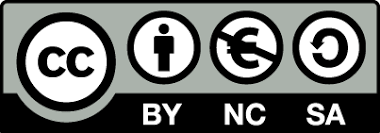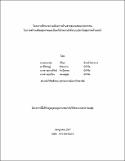บทคัดย่อ
การศึกษาในครั้งนี้มีวัตถุประสงค์เพื่อ 1) ศึกษาความต้องการด้านสารสนเทศของประชาชนในการสร้างเสริมและการป้องกันโรค 2) ศึกษาช่องทางการเข้าถึงสารสนเทศของประชาชนต่อการดูแลสุขภาพและป้องกันโรค และ 3) ศึกษาปัจจัยที่มีอิทธิพลต่อความต้องการสารสนเทศในการสร้างเสริมและป้องกันโรค โดยศึกษาภายใต้ระบบหลักประกันสุขภาพถ้วนหน้า และเก็บรวบรวมข้อมูลเชิงคุณภาพด้วยวิธีการสังเกต สัมภาษณ์ และสนทนากลุ่ม ในพื้นที่ศึกษา 4 แห่ง ได้แก่ ชุมชนหนองหอยและชุมชนศรีลานนาในเทศบาลนครเชียงใหม่ ชุมชนวัดเชิงท่า เทศบาลเมืองลพบุรี จังหวัดลพบุรี ชุมชนบ้านแวง ตำบลบ้านแวง อำเภอพุทไธสง จังหวัดบุรีรัมย์ และตำบลสะพลี อำเภอปะทิว จังหวัดชุมพร ผลการศึกษาพบว่า กลุ่มตัวอย่างทั้ง 4 พื้นที่ มีความต้องการสารสนเทศดังนี้ 1) สารสนเทศที่ตอบสนองปัญหาสุขภาพที่กำลังเผชิญ 2) ความต้องการสารสนเทศอันเนื่องมาจากแรงกระตุ้นจากภายนอก 3) ความต้องการให้มีการ “ผลิตซ้ำ” สารสนเทศตามประเด็นความต้องการเพื่อใช้ในชีวิตประจำวัน และพบว่า กลุ่มตัวอย่างต้องการสารสนเทศที่เข้าถึงได้ง่าย ไม่ต้องแสวงหาด้วยตนเอง รับสารได้ง่าย ไม่เป็นวิชาการมากเกินไป เข้าใจง่าย โดยมีเนื้อหาสาระกับความบันเทิงควบคู่กัน เนื้อหาใกล้ตัว เชื่อมโยงกับวิถีชีวิตประจำวัน รูปแบบการนำเสนอน่าสนใจ และมีลักษณะเป็นสื่อสองทางสำหรับช่องทางการเข้าถึงสารสนเทศของประชาชนต่อการดูแลสุขภาพและป้องกันโรค พบว่า สื่อมวลชนที่ทุกกลุ่มเข้าถึงได้ คือ สื่อโทรทัศน์ แต่ช่วงเวลาการเปิดรับสารจะแตกต่างกันไปตามกลุ่ม โดยจำแนกตามกลุ่มวัยและกลุ่มอาชีพได้ สำหรับสื่อบุคคลพบว่ากลุ่มวัยเด็ก ใช้สื่อบุคคล ได้แก่ พ่อแม่ ผู้ปกครอง เพื่อนบ้าน สำหรับกลุ่มผู้สูงอายุ ใช้ สื่อบุคคล ได้แก่ เจ้าหน้าที่อนามัย อสม. แพทย์ เภสัชกร พยาบาลและ สื่อท้องถิ่น ได้แก่ เสียงตามสาย หอกระจายข่าว สำหรับกลุ่มวัยแรงงาน ซึ่งจำแนกเป็น 3 กลุ่มตามกลุ่มอาชีพ คือ กลุ่มโครงการ 30 บาท กลุ่มประกันสังคม และกลุ่มสวัสดิการข้าราชการและรัฐวิสาหกิจ พบว่าแต่ละกลุ่มมีศักยภาพในการเข้าถึงช่องทางสารสนเทศแตกต่างกันนอกจากนี้การศึกษาพบว่าความต้องการสารสนเทศเพื่อการสร้างเสริมและป้องกันโรคเกิดจากปัจจัยที่มีอิทธิพล 3 ประการคือ 1) ปัจจัยส่วนบุคคล ได้แก่ เพศ อายุ การศึกษา อาชีพ ภาวะสุขภาพ วิถีชีวิต 2) ปัจจัยสิ่งแวดล้อม ได้แก่ ความยากง่ายของสารสนเทศ ความสามารถในการเข้าถึงสถานพยาบาล ภาวะสุขภาพของคนในครอบครัว ปัญหาในชีวิตประจำวัน รวมไปถึงการรณรงค์และการกระตุ้นจากภายนอก และ 3) ทัศนคติด้านส่วนบุคคลสุขภาพ ซึ่งประกอบด้วย ทัศนคติและความเชื่อในการดูแลสุขภาพ ความรู้สึกไม่มั่นคงด้านสุขภาพ และความต้องการความมั่นใจในการดูแล สุขภาพจากผลการศึกษา มีข้อเสนอแนะเชิงนโยบายคือ ประการแรกควรมีการกระจายอำนาจการผลิตสารสนเทศ เพื่อการสร้างเสริมสุขภาพและป้องกันโรค ภายใต้ระบบ Universal Coverage หรือ UC เป็น 2 ระดับ คือ ส่วนกลางและระดับจังหวัด ประการที่สอง ควรมีการปรับยุทธศาสตร์ด้านสารสนเทศ โดยการนำเสนอข้อมูลข่าวสารผ่านช่องทางที่สอดคล้องกับความต้องการของประชาชนที่ง่ายต่อการเข้าถึง และผสมผสานกับความบันเทิง ให้มากขึ้นกว่าปัจจุบัน ควรขยายขอบเขตจาก การสื่อสารทางเดียว ผ่าน “ผู้เชี่ยวชาญ” เช่น หมอหรือผู้เชี่ยวชาญมาเป็นการสื่อสารสองทาง ควรพัฒนาและสร้างแรงจูงใจให้สื่อบุคคลเป็นช่องทางสารสนเทศทางด้านสุขภาพที่ได้รับการยอมรับมากขึ้น เช่น เสริมศักยภาพ อสม. และสนับสนุนให้มีคณะกรรมการเพื่อบริหารจัดการสารสนเทศเพื่อสร้างเสริมสุขภาพทั้งในส่วนกลางและระดับจังหวัด และประการสุดท้ายเสริมสร้างการกระตุ้นและการรณรงค์จากภายนอก ซึ่งเป็นปัจจัยหนึ่งที่ทำให้เกิดความต้องการสารสนเทศ โดยการใช้ประโยชน์จาก “กระแส” และ การผลิตสารสนเทศ “เชิงรุก”
บทคัดย่อ
The study has three objectives: 1) to study the information needed for health promotion and disease prevention, 2) to study the channel to access information on health care and disease prevention, and 3) to study the factors influencing the needs of information to promote health and disease prevention. The study is under the “Universal Health Coverage Program. The technique for data and information collection include observations, interviews and focus group discussions. The four selected research sites are; Nong-Hoi and Sri Lanna Community in Chiangmai Municipality, Wat Choeng-Ta at Lopburi Municipality, Bang-Wang in Buriram and Sa-Plee in Chumpon.The study found that the sample groups from all study sites needed the information as followings: 1) the information concerning their immediate health problems, 2) the information caused by external motivation either from government or private sectors, and 3) the needs for “repetition” of the information according their daily needs. The study also found that, the information should be user friendly and easily accessible, combining of informative data and entertainment that related to their lifestyle and daily activities, that is interesting and interactive (two-way communicated).For the channel of information accessibility; all groups could access the information through to the television the most but at different time of the day according to age group and occupation group. For the children group, they could access the information through television and books in the school library and through their parents, neighbors and the elderly. For the labor group, which can be categorized into three sub-groups; 1) the labor under the 30 Baht coverage program (informal sector labor), the labor under the social security fund (formal sector labor) and the labor under governmental health welfare (government employees). Each group has different potential to access the information on health.The study found that there are three factors associate with health information needs; firstly, personal factors which are sex, age, education, occupation, health condition and lifestyle; secondly, environmental factor which are health threat conditions in the community, the difficulty to understand the information, the ability to access the health care unit, health problems of family members, the daily problem especially the external stimulations; and finally, health care attitudes and values of individuals on health care, the insecurity on their health condition and self-confidence on their health care.The study finding lead to the following policy recommendation: came on suggestions as followings; 1) Decentralize the production of the information under U.C. program in two levels which are at both national and provincial levels; 2) Revise the information strategies to suit the need of the community members such as: ease of use; combination of entertainment and informative data; use two-way communication by linking community members need with doctors or specialists, develop and strengthen the use of health-volunteers; and establish of a committee to be responsible for managing health promotion and disease prevention information; and 3) Use health promotion campaign to promote the need on health information by utilizing “social trend” and create health information programs that are “proactive.”


